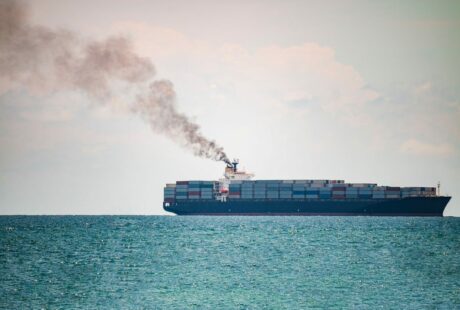In a silver lining to an otherwise grey cloud the International Maritime Organisation this week took an important first step in tackling the threat to Arctic ice from international shipping, and adopted a resolution encouraging states and industry to take their own action on black carbon emissions from shipping.
When black carbon settles onto snow and ice, melting accelerates, and the loss of reflectivity creates a feedback loop exacerbating global heating. Black carbon emissions from shipping in the Arctic increased 85% between 2015 and 2019.
The resolution encourages states to commence addressing the threat to the Arctic from black carbon emissions, and urges ship operators to switch to distillate or other cleaner alternative fuels or methods of propulsion when operating in or near the Arctic.
If all shipping currently using heavy fuel oils while in the Arctic were to switch to distillate fuel, there would be an immediate reduction of around 44% in black carbon emissions from these ships. If particulate filters were installed on board these vessels, black carbon emissions could be reduced by over 90%.
The resolution is of particular importance in respect of the inclusion of shipping in the EU’s flag-ship “Fit for 55” climate proposals. At the moment black carbon from shipping is not included, despite it being responsible for 20% of shipping’s climate impact. The “Fit for 55” package is part of the European Green Deal which is at “the heart of the EU’s Arctic engagement”. In its recently published Arctic Strategy, the EU committed to act against major sources of pollution affecting the Arctic regions in the air, on land and at sea including black carbon. Today’s resolution strengthens the mandate for incorporating black carbon into this package of measures.
The resolution was adopted with widespread support, and despite objections from Russia, Saudi Arabia and China. Helping to facilitate regional and national action on ship emissions is an unusual development for an organisation traditionally protective of its role as the regulator of international shipping.
See here for more information.
Posted on: 26 November 2021



